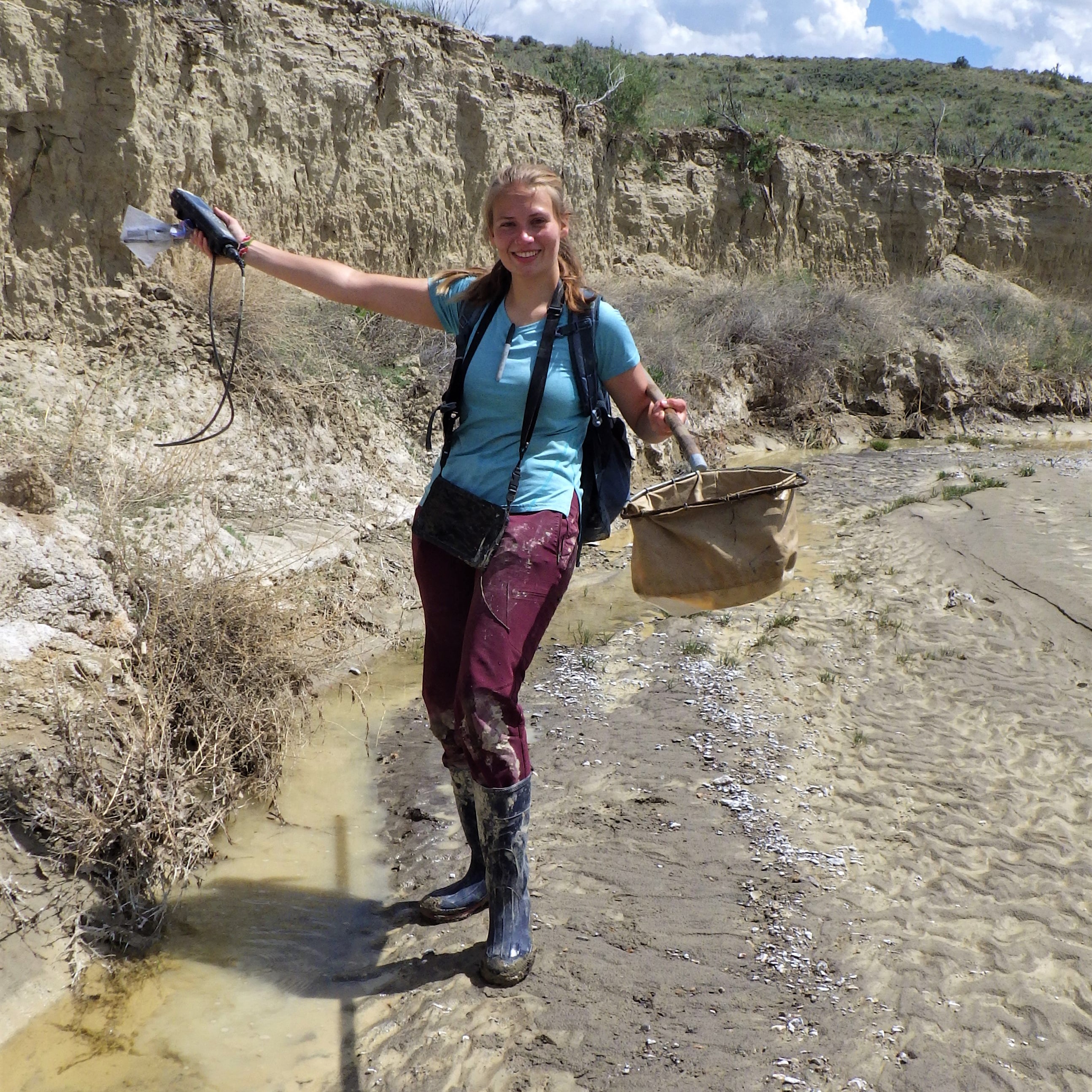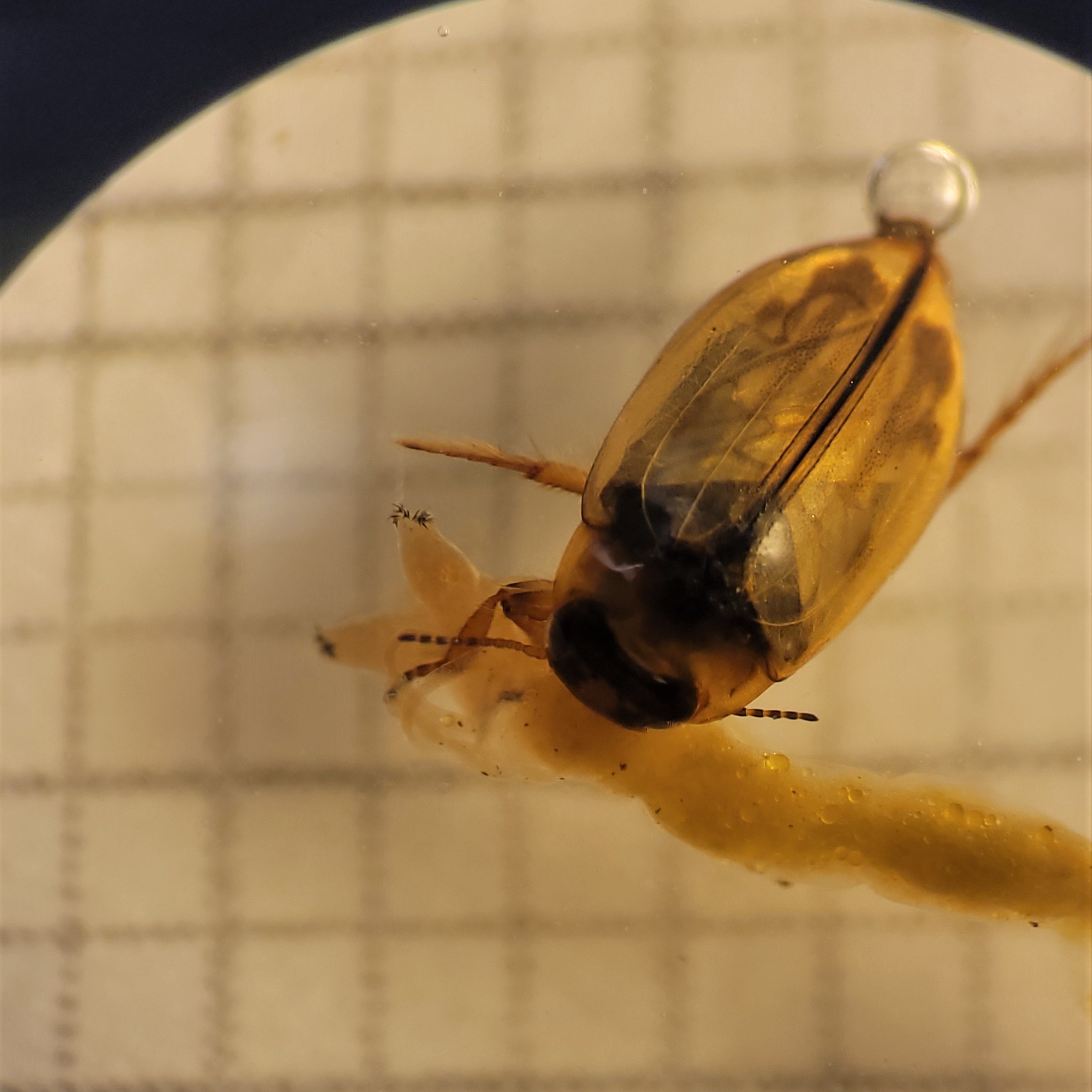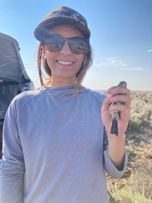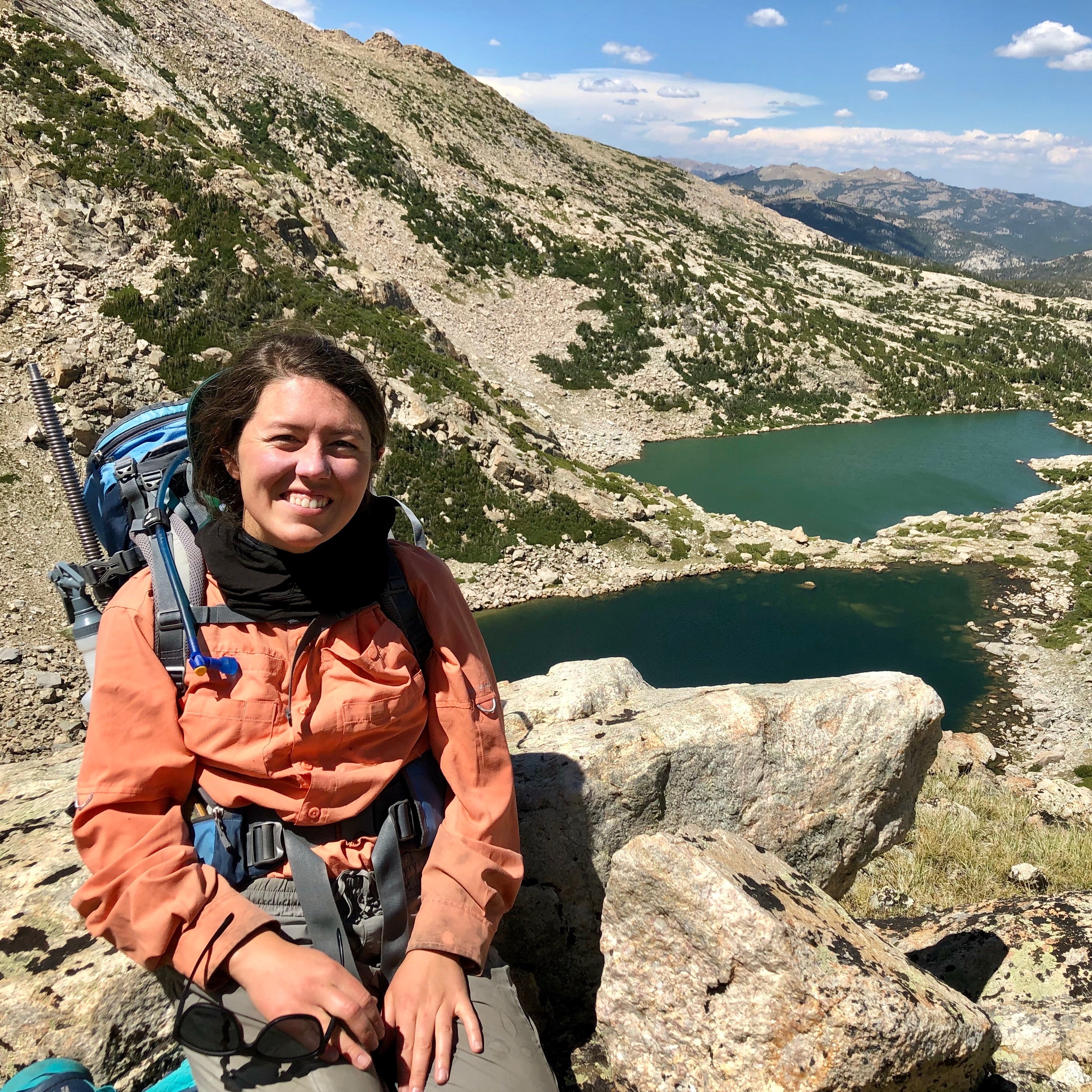No Slides Entered.
Audrey Lindsteadt - How does a rare and endemic aquatic beetle live in a harsh environment?
Audrey Lindsteadt
Biodiversity Insitute Graduate Student Research Enhancement Grant
Department of Zoology and Physiology
Graduate Advisor: Lusha Tronstad
Background:
Introducing the Narrow-foot Hygrotus Diving Beetle (Hygrotus diversipes)! This tiny aquatic beetle is rare and endemic to central Wyoming and is being considered for listing under the U.S. Endangered Species Act since so little is known about it. Hygrotus diversipes have only ever been detected at a total of 14 creeks in central Wyoming since the species was discovered in 1964. Hygrotus diversipes are found in small, disconnected pools in intermittent creeks. These creeks are harsh environments that experience sudden droughts, violent flash floods, and high concentrations of salts. The salinity of these pools ranges from 1,000 to 65,000μS/cm, which is comparable to ocean surface conductivity (10,000 to 65,000μS/cm).
My project:
Harsh environments tend to have lower biodiversity because of the physiological challenges associated with surviving there. My research aims to discover why H. diversipes selects for the extreme environments it inhabits. I hypothesize these beetles select for harsh habitats because they have less biotic interactions (e.g., predators and competitors). I also hypothesize these beetles are subjected to harsh conditions near their physiological limits and are unable to achieve optimal fitness. This challenges the paradigm that rare and endemic species are physiologically adapted to the abiotic conditions of their specific locality and love it there. The goal of this project is to determine the habitat characteristics this species selects for, the conductivity limits of this species, and how predicted effects of climate change may alter the habitat this rare beetle occupies. Accordingly, I am conducting habitat selection surveys, performing two salinity laboratory experiments, and analyzing the hydrology of these habitats.
Who cares about a 4mm long bug?
As climate change and anthropogenic effects alter the few sites this beetle lives in, H. diversipes may not be able to adapt. If H. diversipes is or will be threatened with future climate predictions, other species in these unique habitats may be too.
Share This Page



Research Highlights




